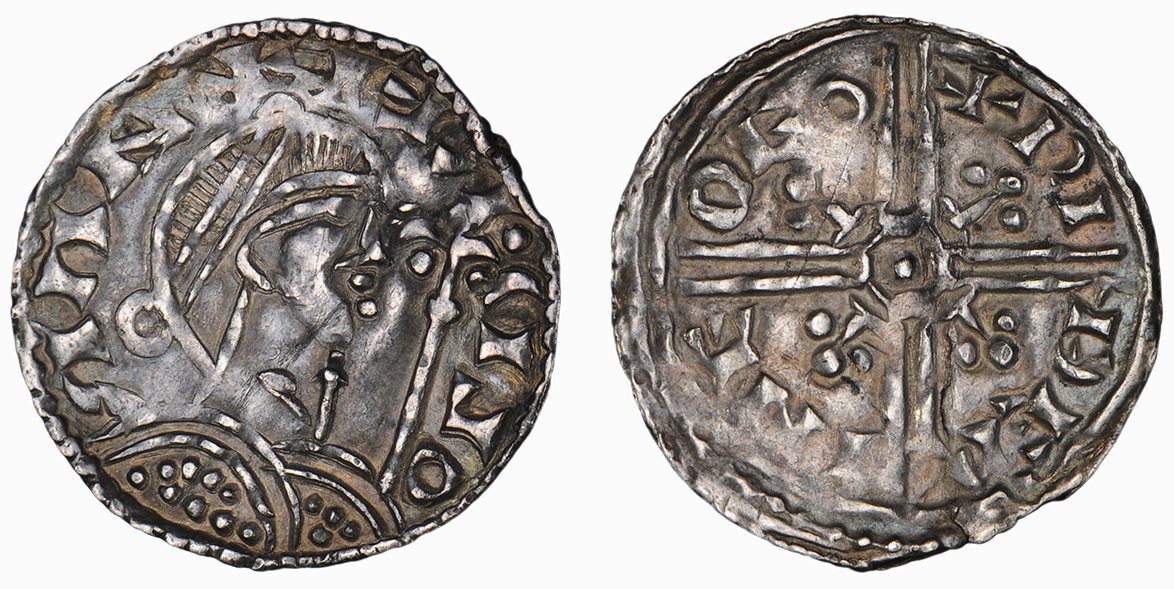 The right facing bust of Harold is the result of an engraver punching the obverse die forwards instead of backwards. As this design was in error there are very few examples produced before the mirror image die was removed and probably destroyed.
The right facing bust of Harold is the result of an engraver punching the obverse die forwards instead of backwards. As this design was in error there are very few examples produced before the mirror image die was removed and probably destroyed. A study of the coins of Harold I by Alexander Parsons notes three examples in the Royal Cabinet at Stockholm by the moneyers Othin, Ucedee and Witherine, he came across one further example in the extensive Lockett collection, also by Witherine. The Lockett example was considered unique in private hands in the 1950s and had featured as an illustrated coin in the Murdoch and Montagu sales of the late 1800s and early 1900s.
This coin variety has only appeared once every 30 – 50 years at auction and has achieved prices that have exceeded the value of an extremely fine Harthacnut penny (currently £7,000 - £9,000) and over five times the value of Harold’s regular penny issue in extremely fine condition (currently £1,500 - £1,900).







